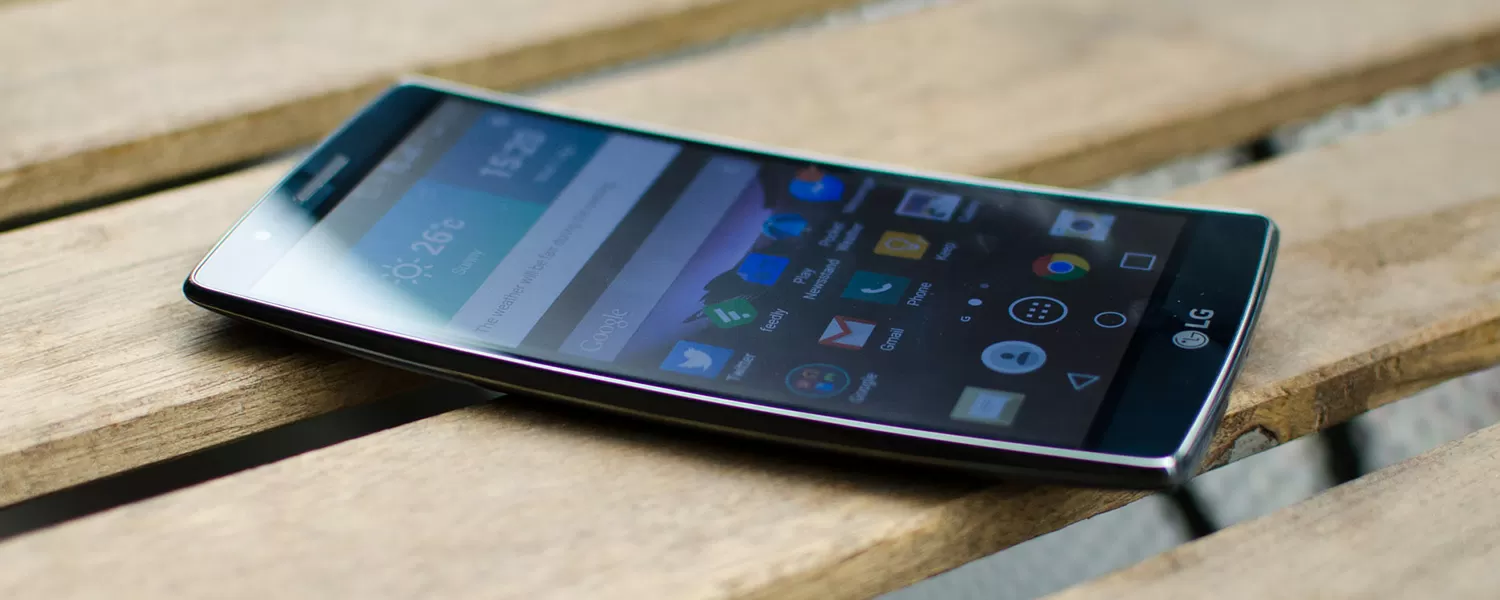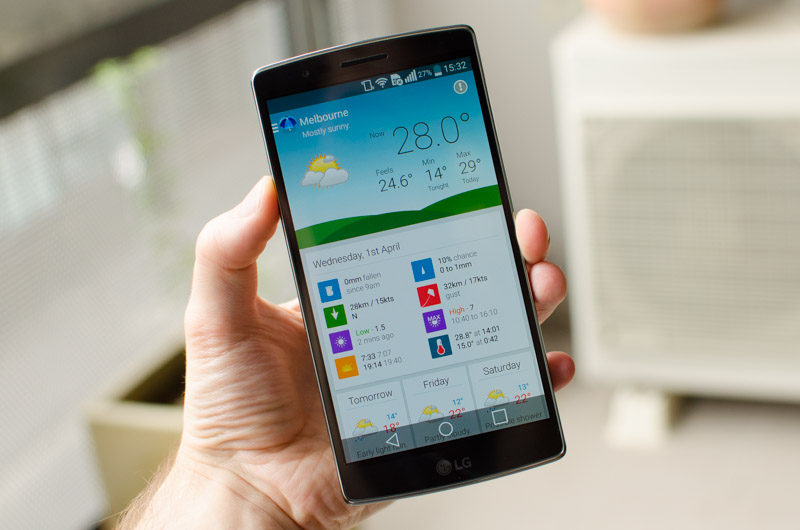LG has a very interesting idea of what a good flagship smartphone should be. The G2 and later the G3 had unorthodox button placement on the rear panel, but with a bit of practice this was hardly an issue. The G Flex was even more unorthodox with a massive 6-inch display curved in such a way to (supposedly) better fit the palm of your hand and shape of your face – in practice it was just awkward.
Now they're back at it again with the G Flex 2. While similar in shape to the original, the second-generation Flex features a more reasonable 5.5-inch display, which keeps the handset closer in size to today's popular flagships. The flexibility of the original also remains, allowing the G Flex 2's curved body to bend in certain circumstances.
On the inside, LG is packing in the latest and greatest hardware. This is the second product to hit the TechSpot test bench that's powered by Qualcomm's flagship and most powerful SoC, the 64-bit capable Snapdragon 810. The screen has been upgraded from 720p to the flagship-standard 1080p, and we're also getting LG's latest 13-megapixel camera module with a laser-assisted autofocus system and optical image stabilization.
Although the G Flex 2 is still a niche flagship, and comes with a price tag that will likely be off-putting for all but the keenest early adopters, it's nevertheless positioned against the standard crop of high-end smartphones. The question becomes whether the curved G Flex 2 is worth it.
The main feature of the G Flex 2 that makes it stand out from the crowd is, by far, the curved design. The vast majority of phones produced today use a standard, flat slate body that gets refined with every release. Some phones are curvier than others, but typically it's a variation of a theme that started with the original iPhone. However with the G Flex 2, like the original G Flex, curves are taken to the next level.
The entire body of the G Flex 2 is concavely curved, including the display and the battery inside. The curve isn't exactly subtle: there's no mistaking the G Flex for a flat smartphone from many angles. LG did, however, decrease the amount of curvature in the G Flex 2 compared to its predecessor, which is a sensible decision that improves usability. Combined with the smaller display size (5.5" down from 6.0"), the G Flex 2 is a more portable, more easy to handle, and more standard-sized flagship.
While LG claims that the G Flex curve allows the device to be better sculpted to fit in your hands, and better shaped for placement against your face, I find the benefits rather dubious. Yes, the phone does sit closer to your face when making calls, which in turn brings the microphone closer to your mouth. But you're not always making calls, and in the hand I see no real improvement in ergonomics from having the device curved in this way.
When you hold your phone in your hands, typically the palm does not make flush contact with the rear of the smartphone; in other words, normally people hold their phones by the edges. Curving the device in the way LG has with the G Flex 2 does not improve its ergonomics, as your hands simply aren't curved in the same direction, and most of the time don't make contact with the back. If the device was curved in the other direction (left-right rather than up-down), your hands might comfortably scoop the back panel more, but with the curve as it is, I don't see any advantage over a regular, flat handset.
In fact there are some problems introduced by the curved design; thankfully they're not major downsides, but they're issues you wouldn't normally get with a flat handset. The most annoying issue is that of comfort: the rectangular profile and curve mix to create an uncomfortable bottom-right edge that somewhat digs in to your right hand (the opposite corner is an issue for left handed usage, too). Then there's the issue of strength.
Curving a phone makes it subject to more stress in some circumstances, such as when it's dropped, or when something is dropped on it. In these cases there is a smaller impact area due to the curve, which leads to higher stress in the impact area. Not only that, but in some situations the phone may want to bend, such as when you're walking with it in your pocket.
Luckily LG has a solution, which, as you may have guessed from the name of the smartphone, is small amounts of flexibility in the body. When I first heard that the G Flex 2 is a flexible device, I assumed it was relatively easy to bend. But make no mistake: the G Flex 2 is remarkably tough and rigid, taking a lot of force to bend it even slightly. The flexibility was obviously introduced as a failsafe to prevent the phone from snapping when something attempted to flatten it, rather than as a cool feature you can show off to people. The ability to bend the handset completely flat (albeit momentarily) also makes it much tougher than it otherwise would have been, and alleviates the need to worry about its breakability.
LG has also thought about the longevity of the device by coating the plastic rear panel with second-generation self-healing polymers. When the panel is scratched or lightly damaged, the coating will repair itself in around 10 seconds in room temperature, which is a decent improvement on the hours the coating took to repair scratches on the original G Flex. As for looks, the back panel has a familiar metallic shine to it, similar to the LG G3, which looks decent but can't fully replicate the qualities of real metal.
Most of the G Flex 2 appears to have been crafted from plastic, which is no surprise considering the flexibility of the handset. Thanks to the self-healing coating, the G Flex 2's is glossy and smooth to the touch, something I'm not a huge fan of as it cheapens the appearance of the device. However the use of Gorilla Glass 3 on the front, combined with a chemical strengthening treatment from LG, is good to see and keeps the front feeling slick and swooshable.
Like the past few flagships from LG, the G Flex 2's only physical buttons are located on the back panel, just below the camera module. The convex power button is placed between the volume buttons, and with a small amount of practice, the unconventional positioning becomes easy to use. Also on the back you'll find the main device speaker, which as usual is loud enough but not excellent in terms of quality.
Around the rest of the device, there's not much to see, except for the microUSB port and 3.5mm audio jack on the bottom. On the top is a single microphone and the infrared LED for controlling TVs. Removing the back cover reveals a microSD card slot and micro-SIM slot, but no removable battery. You'd think that maybe these slots could have been accessible through a tray, removing the need for a massive removable piece of plastic, but apparently not.










